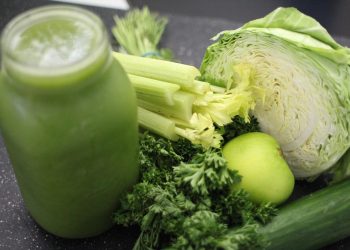Natural pain relief today is more than just a buzzword; it’s a vital approach to living life fully. If you’re tired of relying on over-the-counter medications that often come with side effects, you’re not alone. Many are searching for alternatives that are not only effective but also promote overall well-being. It’s time to explore some surprising methods that can help ease your discomfort and enhance your quality of life.
Contents
Understanding Natural Pain Relief
Natural pain relief encompasses various methods and therapies that utilize the body’s inherent ability to heal itself. This approach is significant because it prioritizes holistic wellness over temporary fixes. Whether you’re grappling with chronic pain, stress-related tension, or the occasional headache, these alternatives can pave the way for a healthier, more vibrant you.
The Importance of Choosing Natural Remedies
Choosing natural remedies can empower you in your healing journey. They often come with fewer side effects, can be more affordable, and promote a deeper connection to your body. Plus, the satisfaction of discovering what works for you is unparalleled. So, let’s dive into seven surprising ways for natural pain relief today!
1. Embrace the Power of Turmeric
Turmeric isn’t just a spice; it’s a powerhouse of anti-inflammatory properties. Curcumin, the active compound in turmeric, has been shown to help with pain relief, particularly in conditions like arthritis.
How to Use Turmeric
- Golden milk: Mix turmeric powder with warm milk (dairy or plant-based) and a dash of pepper for absorption.
- Smoothies: Add a teaspoon to your morning blend for a spicy kick.
- Supplements: Consider turmeric capsules if you’re not a fan of the taste.
The Science Behind It
Studies suggest that curcumin can reduce pain and improve function in those with knee osteoarthritis. Check out more about turmeric’s benefits on Healthline.
2. Explore Acupuncture
Acupuncture may sound intimidating, but it’s a gentle way to relieve pain. This ancient Chinese practice involves inserting thin needles into specific points on the body to promote healing.
Benefits of Acupuncture
- Reduces chronic pain: Conditions like back pain, migraines, and joint issues can see significant improvement.
- Enhances energy flow: It balances the body’s energy, leading to overall wellness.
Getting Started
Find a licensed acupuncturist to ensure a safe and effective experience. For more information, visit the National Center for Complementary and Integrative Health.
3. Harness the Magic of Essential Oils
Essential oils are not just for making your home smell divine; they can also offer remarkable relief. Oils like peppermint, lavender, and eucalyptus have analgesic and anti-inflammatory properties.
How to Use Essential Oils
- Diffusion: Add a few drops to a diffuser to create a soothing environment.
- Topical application: Dilute oils with a carrier oil and massage them onto painful areas.
- Bath time: Add a few drops to your bath for a relaxing soak.
The Impact of Aromatherapy
Aromatherapy has been shown to decrease pain levels and improve mood. For more insights into essential oils, check out The National Association for Holistic Aromatherapy.
4. Get Moving with Gentle Yoga
You might think that stretching or moving could aggravate your pain, but gentle yoga can work wonders. It helps improve flexibility, strength, and overall body awareness.
Benefits of Yoga for Pain Relief
- Reduces muscle tension: Poses promote relaxation and alleviate tightness.
- Enhances mental clarity: Mindfulness practices can help you manage pain perception.
Tips for Starting
Look for beginner classes or online tutorials focusing on pain relief. Even just a few minutes daily can make a difference.
5. Discover the Benefits of Mindfulness Meditation
Mindfulness meditation is more than just a trend; it’s a powerful tool for pain management. By focusing your mind and reducing stress, you can change how you perceive pain.
Why Mindfulness Works
- Reduces stress response: Lowered stress can lead to decreased pain perception.
- Enhances emotional regulation: You’ll feel more in control of your reactions.
Getting Started with Mindfulness
Try guided meditation apps like Headspace or Insight Timer. Even a few minutes a day can set the tone for your healing journey.
6. Consider a Change in Diet
Believe it or not, what you eat can greatly impact your pain levels. An anti-inflammatory diet can help reduce pain and improve your overall health.
Foods to Include
- Fruits and vegetables: Berries, leafy greens, and citrus are packed with antioxidants.
- Omega-3 fatty acids: Fish, flaxseeds, and walnuts can help combat inflammation.
- Whole grains: Quinoa, brown rice, and oats can stabilize blood sugar and support energy levels.
The Connection Between Diet and Pain
Research shows that certain foods can trigger inflammation, while others can help reduce it. For more detailed information on dietary changes, check out Harvard Health Publishing.
7. Utilize Heat and Cold Therapy
Heat and cold therapy are tried-and-true methods for pain relief. They’re simple, effective, and can be done at home.
How to Apply Heat and Cold
- Heat therapy: Use a heating pad or warm towel on sore muscles to improve blood flow and ease tension.
- Cold therapy: Apply a cold pack or ice wrapped in cloth to reduce inflammation and numb painful areas.
When to Use Each
- Heat: Best for muscle stiffness or tension.
- Cold: Ideal for acute injuries or swelling.
Bottom Line
Natural pain relief today is not just possible; it’s within your reach! By embracing these seven surprising methods, you can take control of your pain and foster a deeper connection with your body. Whether it’s turmeric, acupuncture, or a change in diet, every step you take brings you closer to a pain-free life.
Feel empowered to explore these options and discover what resonates with you. Your body deserves care, respect, and love.
Frequently Asked Questions
1. How quickly can I expect to see results from natural pain relief methods?
Results can vary, but many people notice improvements within a few days to weeks of consistent practice.
2. Are there any side effects to these natural remedies?
Most natural remedies have fewer side effects than pharmaceuticals, but it’s essential to consult with a healthcare provider, especially if you have existing conditions.
3. Can I combine these methods?
Absolutely! Many people find that a combination of these approaches works best for them. Always listen to your body and adjust accordingly.
Start your journey toward natural pain relief today. You have the power to change your narrative!
Get Your FREE Natural Health Guide!
Subscribe now and receive our exclusive ebook packed with natural health tips, practical wellness advice, and easy lifestyle changes — delivered straight to your inbox.















